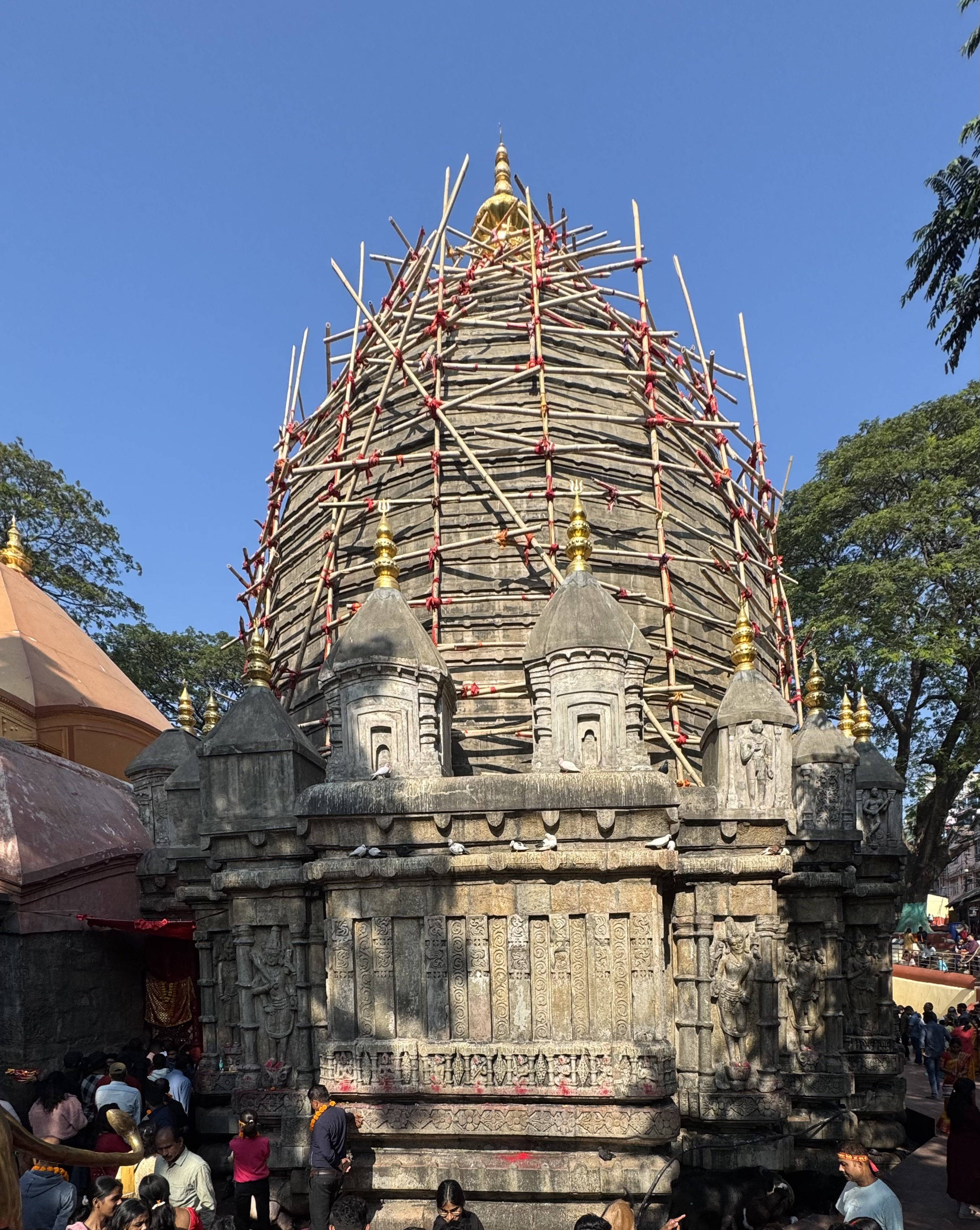The Ancient History of Kamakhya Temple
The Kamakhya Temple, nestled in the mystical hills of Guwahati, is one of the oldest and most revered Shakti Peethas. Legend speaks of its origin dating back to the time when Lord Shiva carried the body of Goddess Sati, and her Yoni fell at this sacred spot. The temple has witnessed countless centuries of devotion, rebuilding, and spiritual enlightenment.
Through the ages, various dynasties have contributed to its grandeur, with the current structure being rebuilt in the 17th century by King Nara Narayana of Cooch Behar. The temple stands as a testament to unwavering faith and divine presence.
Divine Architecture of the Temple
The Kamakhya Temple exhibits a remarkable blend of architectural styles, featuring elements from both North and Northeast Indian temple architecture. The main temple, with its distinctive hemispherical dome, houses several smaller temples within its complex.
The intricate carvings on the walls depict various forms of the Goddess, celestial beings, and geometric patterns. The temple's design follows sacred geometry principles, creating a powerful spiritual atmosphere that enhances the devotee's connection with the divine.
Sacred Rituals and Practices
Daily rituals at the Kamakhya Temple follow ancient Tantric traditions, with elaborate ceremonies performed from dawn to dusk. The morning begins with the awakening of the Goddess through sacred chants and offerings, followed by various puja ceremonies throughout the day.
Special emphasis is placed on the offering of red hibiscus flowers, considered particularly dear to the Goddess. The temple is unique in its celebration of the divine feminine energy through various tantric practices and rituals.
Festivals and Celebrations
The Ambubachi Mela is the temple's most significant festival, celebrating the annual menstruation of Mother Earth. During this time, thousands of devotees and tantric practitioners gather to honor the Goddess.
Other major celebrations include Durga Puja, Pohan Biya (the marriage ceremony of the Goddess), and various other festivals that mark important dates in the Hindu calendar. Each celebration brings its own unique rituals and spiritual significance.




